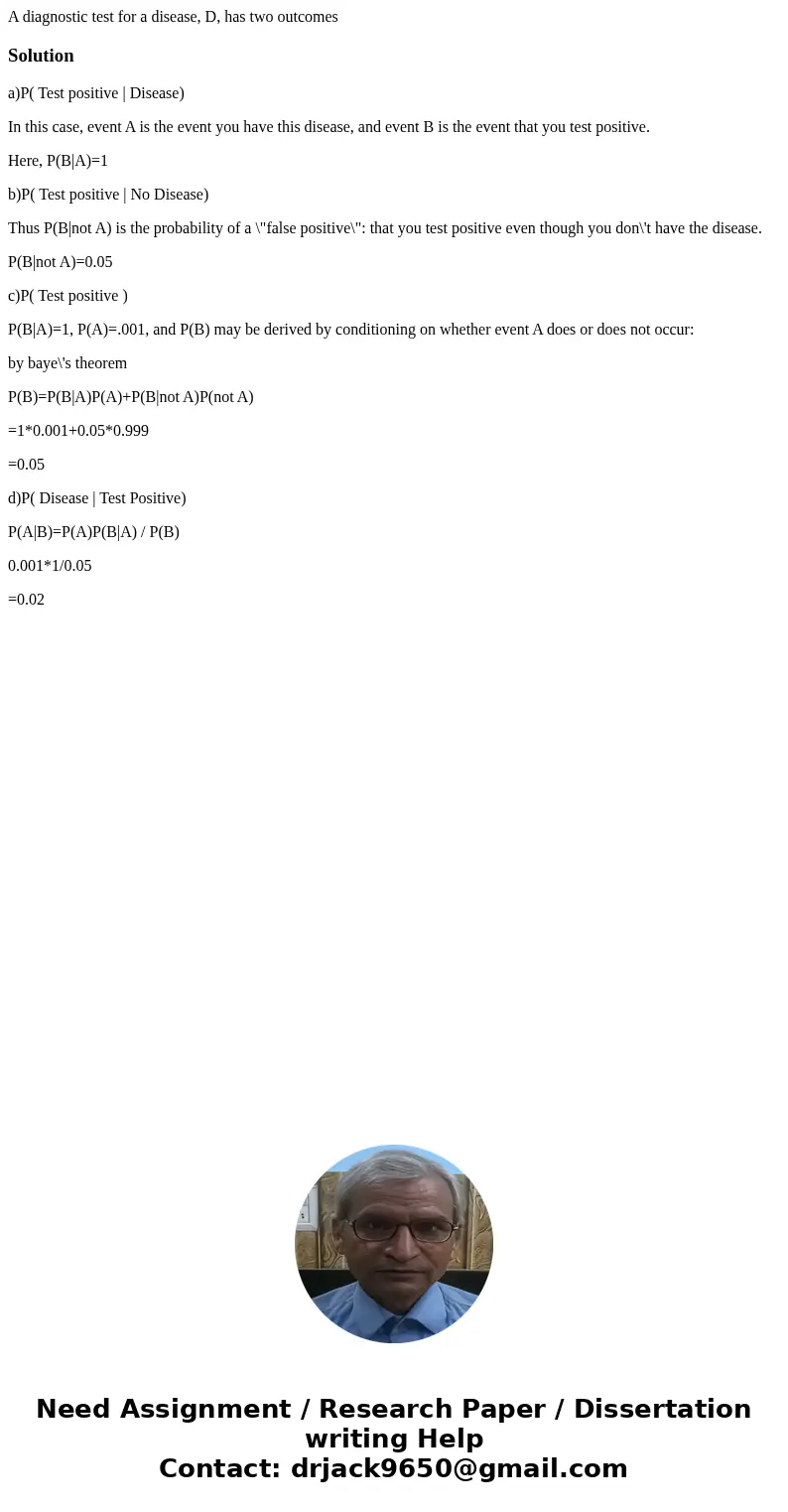A diagnostic test for a disease D has two outcomesSolutionaP
A diagnostic test for a disease, D, has two outcomes
Solution
a)P( Test positive | Disease)
In this case, event A is the event you have this disease, and event B is the event that you test positive.
Here, P(B|A)=1
b)P( Test positive | No Disease)
Thus P(B|not A) is the probability of a \"false positive\": that you test positive even though you don\'t have the disease.
P(B|not A)=0.05
c)P( Test positive )
P(B|A)=1, P(A)=.001, and P(B) may be derived by conditioning on whether event A does or does not occur:
by baye\'s theorem
P(B)=P(B|A)P(A)+P(B|not A)P(not A)
=1*0.001+0.05*0.999
=0.05
d)P( Disease | Test Positive)
P(A|B)=P(A)P(B|A) / P(B)
0.001*1/0.05
=0.02

 Homework Sourse
Homework Sourse